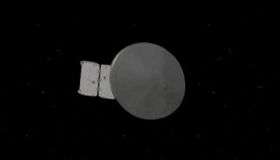Phoenix Mars Lander: Radar and Other Gear Pass Checkouts

Two crucial tools for a successful landing of America's latest mission to Mars, the radar and UHF radio on NASA's Phoenix Mars Lander, have passed in-flight checkouts.
The ultra-high-frequency radio won't be turned on again until landing day, May 25, 2008, when it will relay communications from Phoenix to orbiters already in service around Mars. Since launch on Aug. 4, 2007, and until the day it reaches Mars, Phoenix is communicating directly with Earth via even higher frequency X-band radio, mounted on a part of the spacecraft that will be jettisoned shortly before Phoenix hits the top of the Martian atmosphere.
The radar will monitor the spacecraft's fast-shrinking distance to the ground during the final three minutes before touchdown on Mars, triggering descent-engine firings and other necessary events during the most challenging moments of the mission.
The Phoenix flight operations team tested the radar and UHF radio on Aug. 24. Four days earlier, the team ran the first in-flight checkout of a Phoenix science instrument. This test focused on the Thermal and Evolved-Gas Analyzer, which will check for water, carbon-containing molecules and other chemicals of interest in the icy soil of Mars. The checkout verified the health of an ion pump, which will be used during the transit to Mars to remove most water vapor carried from Earth with the instrument. Four additional science instruments are scheduled for checkouts before the spacecraft's next trajectory correction maneuver, planned for Oct. 16.
As of Sept. 1, Phoenix will have covered 81 million kilometers (50 million miles) of its 679-million kilometer (422-million-mile) flight to Mars. It is traveling at 34 kilometers per second (76,000 mph) in relation to the sun. Meanwhile, careful preparations continue for the white-knuckle minutes before landing and the potential scientific discoveries at the landing site.
"Everything is going as planned. No surprises, but this is one of those times when boring is good," said Barry Goldstein, Phoenix project manager at NASA's Jet Propulsion Laboratory, Pasadena, Calif.
Phoenix will fly to a site farther north than any previous Mars landing. The solar-powered lander will robotically dig to underground ice and will run laboratory tests assessing whether the site could have ever been hospitable to microbial life. The instruments will also look for clues about the history of the water in the ice. They will monitor arctic weather as northern Mars' summer progresses toward fall, until solar energy fades and the mission ends.
Source: NASA




















